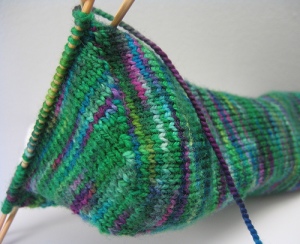Still looking for some NaNoWriMo inspiration. Here are 5 more writing starters to get you creating.
16. Head to your local bookstore or library with a friend and your writing journal. Take 2 envelopes and lots of small pieces of paper. For 5 minutes wander the store and write random novel titles on the small pieces of paper and put them in your envelopes. At the end of 5 minutes, exchange envelopes. Dip in and pull out a title and brainstorm a story that would go with those words. Maybe you could use the words as a line of dialogue to begin your story or in the opening sentence. Keep playing until one story starts to claim your full attention. Start writing.
17. Begin your story with your character in motion—driving, running, flying, riding. What is your character running from? What is your character running to?
18. You’re walking home with a friend after dark. When you look at her, her eyes reflect light like a cat’s.
19. Your character loses a backpack/ purse/briefcase containing one thing that his or her future depends upon.
20. Free write around one or all of the following words: box, watch, garden, window, ship
“The difference between the right word and the almost right word is the difference between lightening and the lightening bug.” Mark Twain.

